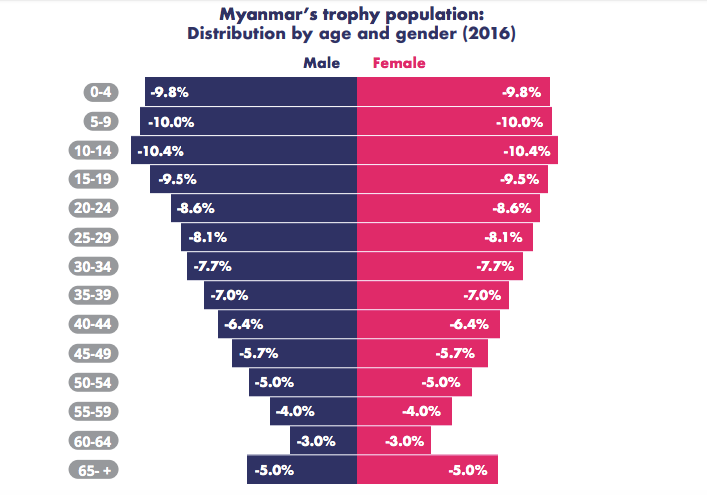Myanmar is rapidly transforming after decades of isolation, making changes to the political and economic environment, including the country's labour market. Based on our report, "The Next Growth Wave: Rising Consumerism in Myanmar", Myanmar's GDP per capita is growing in a fast pace, forecasted to reach US$ 2,211 by 2022. Adding to that, a staggering 36% of the population in Myanmar belongs to the 10-29 age group, followed by 27% of the 30-49 age group, presenting a young and aspiring workforce. However, the country still faces major stumbling blocks to build a highly skilled workforce, despite its emergence as one of the world's fastest-growing economies.
Promising Young Workforce
After years of economic deprivation and exclusion from the global ecosystem, the young Myanmar population is chasing their long delayed dreams to secure better job opportunities, gain access to global brands, connect to the digital world, and accelerate their impact on the economy.

Lack of Skilled and Certified Workers
Despite the promising young workforce, Myanmar is still struggling in providing skilled workers for several key sectors, including manufacturing, construction and tourism. As the country is now starting to attract more investments, it needs greater number of certification workers, proving their skills to foreign investors. Businesses end up facing a shortage of skilled workers and need to have a-long term plan in solving this problem.
The National Skills Standards Authority (NSSA) in Myanmar issued many certificates to their skilled workers with four skill levels for 19 kinds of jobs as its ground. More than 5000 certificates had been issued by NSSA to recognise worker's skill during 2017-2018 fiscal year, according to the country's Minister of Labour, Immigration, and Population. A total of 5,164 out of 5,855 workers were also granted a certificate according to international standards. The number exceeded the estimate target of the NSSA with the success rate of 88%.
The significant shortage of skilled workers is also seen as a result of Myanmar's high dropout rates. According to the United Nations Children's Fund (UNICEF), more than one million children in Myanmar did not attend school, one in five children in the country are not educated beyond primary level, and less than 70% complete primary education at the correct age.
The Ministry sees the importance for Myanmar to transform its economy from works based on natural resources to human resources in order to further develop Myanmar's economy. The workers need to be trained so they are able to compete with other workers from neighboring countries. Thus, the skills certificates are expected to help the workers fight against wage discrimination.
